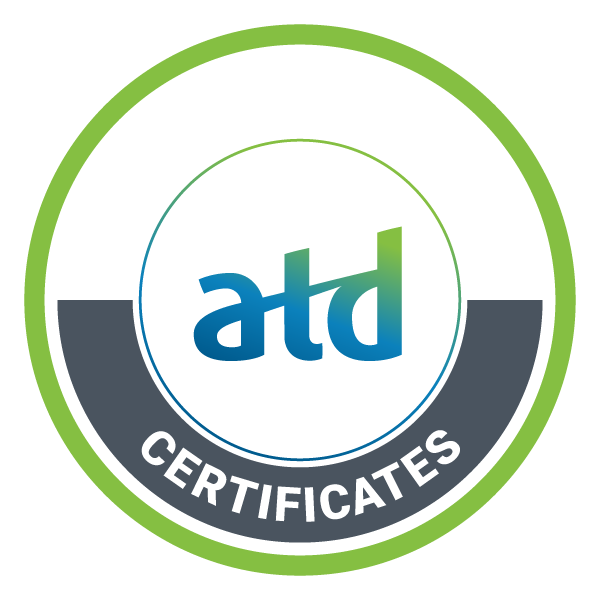Virtual Instructional Design Certificate
Design engaging training for the virtual classroom.
Use intentional and thoughtful instructional design practices to design virtual learning events that engage and motivate learners to apply new skills and knowledge on the job.
Live Online
Private training
Virtual Learning Instructional Design Certificate: Course Info
Intentional and thoughtful instructional design is necessary for successful virtual learning events. Well-designed virtual courses (specifically, instructor-led synchronous online courses), supported by well-designed materials and learning objectives, keep participants motivated and engaged throughout the online learning experience.
Optimizing the Virtual Learning Environment through Instructional Design
An effective instructional design process follows a system of assessing needs, designing a process, developing materials, and evaluating effectiveness. Creating programs for a virtual platform is no different and requires the same foundational skills. Core instructional design fundamentals require the analysis and selection of the most appropriate strategies, methodologies, and technologies to maximize the online learning experience and knowledge transfer—whether you are converting a face-to-face classroom course or designing for a virtual delivery from the beginning.
Research-Backed: Aligned to the Instructional Design Capability of the Talent Development Capability Model™, this virtual instructional design certificate program will provide you with more than 20 ATD-exclusive tools, templates, and online resources and the opportunity to practice using them on a flexible, authentic learning project. Your project allows you to demonstrate your new skills in writing effective learning objectives, outlining a virtual learning event, creating engaging activities, and more.


Format
Live Online
Private Training

Roles
Instructional Designer, Trainer/Facilitator, Professor/Educator

Capability Areas
Instructional Design

Level
Capable

Language(s)
English

Credits
APTD 21
CPTD 21
CEU 2.1
PDC 21
HRCI 21

Recognition
ATD Certificate of Completion, Digital Badge
FAQs
Course Topics
Dates & Locations
Time Zone: UTC
Credits & Recognition
 ATD Certificate of Completion
ATD Certificate of Completion Digital Badge
Digital Badge 21 Learning Hours
21 Learning Hours 2.1 CEUs
2.1 CEUs| Additional Credits | Type | Credits | |
|---|---|---|---|
| APTD Credential | Professional Development Hours/Recertification Points | 21 | More Info |
| CPTD Credential | Professional Development Hours/Recertification Points | 21 | More Info |
| Society for Human Resource Management | Professional Development Credits (PDCs) | 21 | More Info |
| HR Certification Institute® | Recertification Credit Hours | 21 | More Info |
Facilitators
WHAT OUR PARTICIPANTS ARE SAYING
Testimonials
"This program was spot on for what I was looking for! It offered an excellent overview of the instructional design process from needs assessment, to course design and development, all the way to course evaluation. I gained new insights into selecting the best learning strategies, methodologies, and technologies that would be most effective to reach learners in a virtual environment."
"I have been an ATD member for a long time, and they know their stuff! This course exceeded my expectations."
"I chose ATD for my professional development because they are recognized as a reputable company. The Virtual Instructional Design Certificate was very informative, and I am excited to implement the new skills I've obtained."
Have a Group to Train?
Want to purchase multiple seats or schedule a dedicated team training experience tailored to your organization’s needs? Fill out the form below to schedule a call with an ATD Enterprise Solutions Account Executive to learn more.
